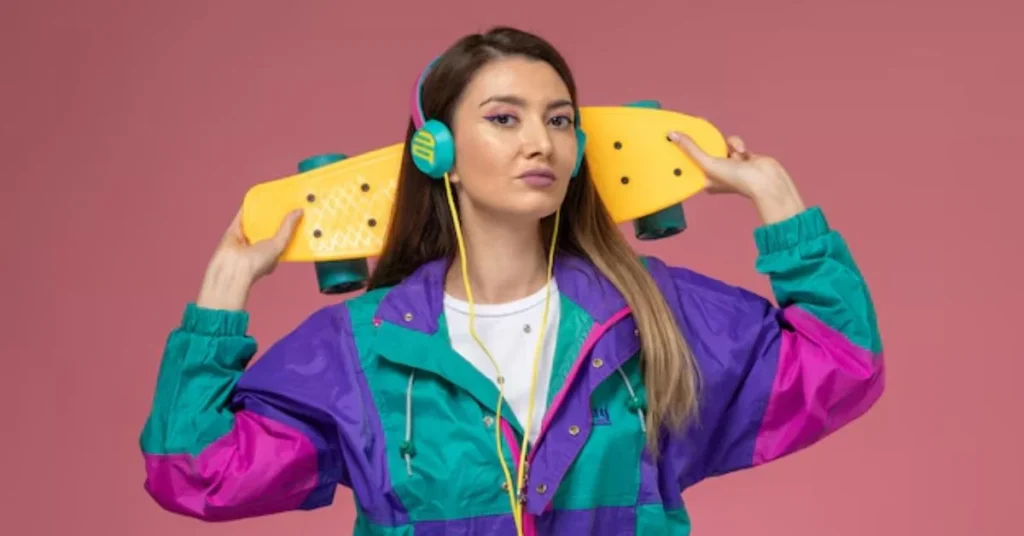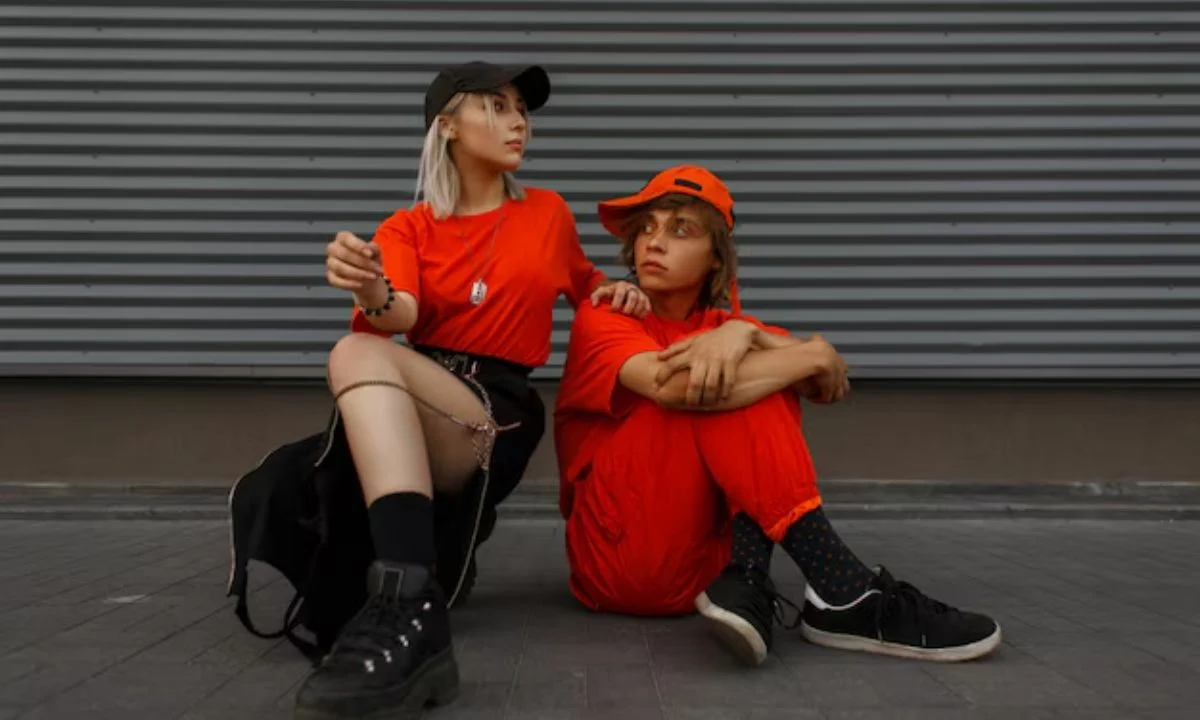The 90s were a groundbreaking time for hip hop, not just musically but also in the realm of fashion. 90s hip hop fashion was a revolution, mixing urban streetwear with high-end designer elements. The bold, oversized clothes, bright colors, and eye-catching accessories represented more than just trends—they became a reflection of the culture, confidence, and spirit of the era.
Throughout the 90s, artists like Tupac Shakur, Biggie Smalls, Aaliyah, and Missy Elliott embraced and showcased unique looks that resonated with fans and still inspire today’s streetwear. Let’s dive deep into the key elements that defined and how this distinctive style became a worldwide phenomenon.
Must read What Is Y3K Fashion? Exploring the Future of Style Beyond 3000
How Oversized Silhouettes Defined
One of the defining characteristics of 90s hip hop fashion was the love for oversized clothing. Baggy jeans, extra-large t-shirts, and loose-fitting jackets were everywhere. This trend wasn’t just about comfort but also about making a bold statement.
Hip hop artists like Notorious B.I.G. and Wu-Tang Clan were often seen wearing baggy clothes that reflected a casual yet rebellious attitude. The style was accessible, allowing fans to emulate their favorite rappers without breaking the bank.
Moreover, oversized clothing in hip hop fashion symbolized a break from traditional, formal clothing and a new sense of freedom. It was about dressing for yourself, not for anyone else. This laid-back yet bold look helped set the tone for the entire 90s streetwear movement.
The Influence of Sportswear
Sportswear brands like Adidas, Nike, and FUBU became essential to the 90s hip hop fashion scene. Artists like LL Cool J, Run DMC, and Jay-Z proudly wore tracksuits, hoodies, and branded sneakers, which blurred the lines between sports and fashion. Tracksuits, particularly by Adidas and Nike, were practical, comfortable, and, most importantly, trendy.

Run DMC famously rocked Adidas Superstars with no shoelaces, turning the sneaker into a global phenomenon. This blending of sportswear with streetwear made it easy for hip hop fans to integrate these pieces into their everyday wardrobe.
The rise of urban sportswear brands such as FUBU (“For Us By Us”) played a huge role in shaping hip hop fashion. Created specifically with the African American community in mind, FUBU became a powerful symbol of cultural pride and entrepreneurship, further cementing the connection between hip hop and fashion.
The Role of High-End Designers
Luxury designers weren’t left out of the hip hop fashion revolution. Brands like Tommy Hilfiger, Ralph Lauren, and Gucci became staples in the wardrobes of many hip hop icons. Artists like Aaliyah and Tupac were often seen in Tommy Hilfiger, while others like Jay-Z and P. Diddy embraced Gucci and Versace.
This mix of high-end and street fashion was revolutionary. Hip hop was a genre that rose from the streets, and for many artists, wearing luxury brands was a sign of success and achievement. They weren’t just flaunting their wealth; they were changing the rules of fashion, proving that street culture and luxury could coexist.
Rapper Nas famously sported a Ralph Lauren Polo jacket in his “Illmatic” album photoshoot, sparking a trend where Polo became synonymous with hip hop culture. This trend of mixing luxury with casual streetwear is still a defining feature of fashion today.

Iconic Accessories That Completed the 90s Hip Hop Look
No 90s hip hop outfit was complete without bold accessories. Gold chains, bandanas, and bucket hats were the finishing touches that elevated an outfit from cool to iconic. Artists like Tupac made the bandana a symbol of rebellion, while LL Cool J popularized the Kangol bucket hat, turning it into a cultural statement.
Gold jewelry, particularly large chains, was not only about style but also a symbol of success. For many hip hop artists, it was a way to show off their achievements and reflect the lavish lifestyle that hip hop had helped them attain.
The influence of accessories didn’t stop there. Sunglasses, specifically dark, oversized frames, were another key component. These added an air of mystery and coolness that many artists, like Missy Elliott, utilized in their music videos and public appearances.
How to Set the Stage for Modern Streetwear
The influence of 90s hip hop can still be seen in today’s streetwear culture. The oversized silhouettes, the blending of sportswear and luxury, and the importance of accessories have all made a comeback in modern fashion.
Brands like Supreme, Off-White, and Yeezy are direct descendants of the streetwear culture that 90s hip hop helped create. Today, artists like Travis Scott, A$AP Rocky, and Cardi B continue to push the boundaries of fashion in the same way that 90s legends did.
Furthermore, the attitude of dressing to express individuality, cultural pride, and success is still very much alive in the world of fashion. The legacy of 90s hip hop is more than just music; it’s a lifestyle, a cultural movement that changed the way we think about clothes.
The Impact of Gender
In the 90s, hip hop fashion wasn’t just a men’s game. Female artists like Lil’ Kim, Aaliyah, and Missy Elliott brought their own flair to the scene. Aaliyah’s tomboy style of oversized pants paired with crop tops became iconic. On the other hand, Lil’ Kim’s bold, often revealing outfits, and flashy accessories showcased a different side of hip hop fashion.
Women in hip hop fashion broke stereotypes and redefined what it meant to be feminine in a male-dominated genre. They proved that they could be just as influential, making fashion statements that resonated with fans worldwide.

Conclusion
In the end, 90s hip hop fashion was much more than just clothes—it was a reflection of culture, success, and individual expression. From oversized jeans to luxury designer brands, this style revolutionized the fashion world and continues to influence trends today.
What made 90s hip hop so special was its ability to take elements of the street and elevate them into a global phenomenon. It wasn’t just about looking good; it was about standing out, making a statement, and showing the world who you were.
As we see the resurgence of 90s fashion in today’s streetwear, it’s clear that this era’s influence is far from over. The boldness, creativity, and cultural pride that defined 90s hip hop continue to inspire designers, artists, and fans worldwide. Click here for more.
What were the main elements of 90s hip hop fashion?
The main elements of 90s hip hop fashion included oversized clothing, sportswear brands like Adidas and FUBU, luxury designer pieces from brands like Tommy Hilfiger and Gucci, and bold accessories such as gold chains and bucket hats.
Why was oversized clothing popular in 90s hip hop fashion?
Oversized clothing was popular because it symbolized rebellion and individuality. It also provided comfort and a bold, casual style that resonated with the hip hop community.
Which accessories were iconic in 90s hip hop fashion?
Iconic accessories included gold chains, bandanas, bucket hats, and dark sunglasses. These added flair and helped artists stand out in their music videos and performances.
How did high-end designers influence 90s hip hop fashion?
High-end designers like Ralph Lauren, Gucci, and Tommy Hilfiger became staples in hip hop fashion. Artists used these brands to blend luxury with street culture, creating a new fashion movement.
Does 90s hip hop fashion still influence today’s trends?
Yes, 90s hip hop fashion still influences today’s streetwear. Brands like Supreme and Yeezy continue the legacy of oversized clothing, bold accessories, and the fusion of luxury and street styles.
